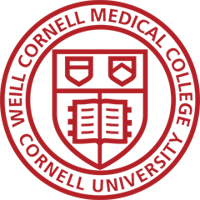Breast augmentation, a popular cosmetic surgery, often falls victim to various myths and misconceptions. Understanding the truth behind these myths is crucial for anyone considering the procedure. Dr. James Anthony, a renowned board-certified plastic surgeon, has dedicated his career to educating patients and providing accurate information. Let's debunk some of the most common myths surrounding breast augmentation.
Myth #1: Breast Augmentation is Extremely Painful
While any surgical procedure involves some discomfort, the notion that breast augmentation is excruciatingly painful is exaggerated. Dr. Anthony emphasizes that advancements in surgical techniques and pain management have significantly reduced post-operative pain. Most patients report manageable discomfort that can be controlled with prescribed pain medication. The pain level varies from person to person, but it is generally described as similar to muscle soreness experienced after an intense workout. Moreover, following the surgeon’s post-operative care instructions can further minimize discomfort.
Myth #2: Breast Implants Need to be Replaced Every 10 Years
The idea that breast implants have a strict 10-year lifespan is a common misconception. According to Dr. Anthony, while breast implants are not lifetime devices, they do not have an expiration date. The replacement need depends on individual circumstances, such as implant integrity and patient preferences. Some patients may need or choose to replace their implants after 10-15 years, but many others enjoy their implants for 20 years or more without issues. Regular follow-up appointments with a qualified surgeon can help monitor the condition of the implants and determine if replacement is necessary.
Myth #3: Breast Implant Sickness is a Major Risk
Breast Implant Illness (BII) is a term used by some patients who experience a variety of systemic symptoms they believe are related to their implants. Dr. Anthony acknowledges that while some women report symptoms they attribute to their breast implants, there is currently no definitive scientific evidence linking these symptoms directly to breast implants. The FDA and various health organizations continue researching BII to understand its causes and prevalence better. Patients concerned about BII should discuss their symptoms and concerns with a qualified plastic surgeon to explore all possible causes and appropriate treatments.
Myth #4: Breast Augmentation Results Look Unnatural
Another prevalent myth is that breast augmentation always results in an unnatural appearance. Dr. Anthony, however, points out that modern breast augmentation techniques prioritize natural-looking results. By carefully selecting the appropriate implant type, size, and placement, surgeons can achieve a balanced and aesthetically pleasing outcome that complements the patient’s body. Personalized consultation and advanced surgical skills are crucial in ensuring natural-looking results.
Myth #5: Breast Augmentation Interferes with Breastfeeding
Many women fear that breast augmentation will impede their ability to breastfeed in the future. Dr. Anthony explains that most breast augmentation procedures do not interfere with breastfeeding. The surgical technique and implant placement can be chosen to minimize any impact on the milk ducts and breast tissue. However, women need to discuss their breastfeeding plans with their surgeon during the consultation to ensure the best approach is taken.
Breast augmentation is surrounded by numerous myths that can cause unnecessary anxiety for prospective patients. Dr. James Anthony’s expertise highlights the importance of separating myths from facts. By consulting with a qualified and experienced plastic surgeon, individuals can confidently make informed decisions and achieve their desired outcomes.







